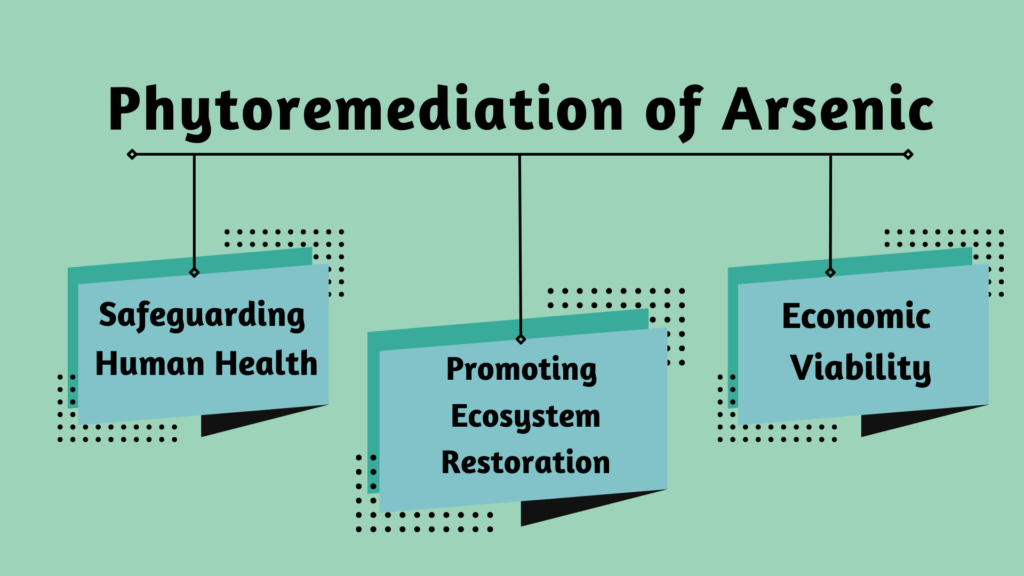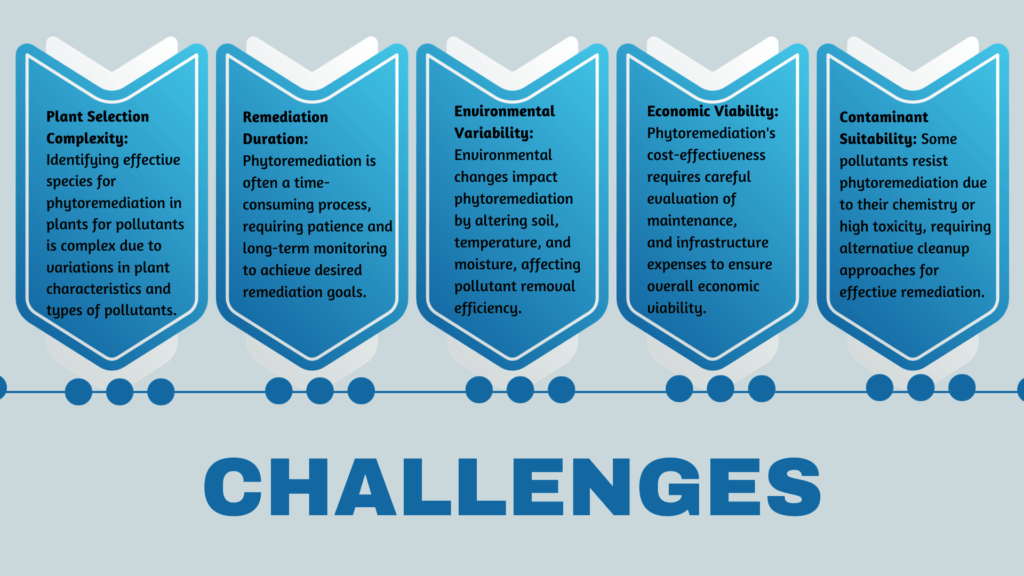In recent years, the state of our environment has triggered mounting concerns, with pollution and contamination posing grave threats to both ecosystems and human well-being. The conventional methods employed for remediation often involve costly, energy-intensive processes that can inadvertently yield unintended repercussions. Amidst these growing challenges, the integration of Artificial Intelligence (AI) has surfaced as a game-changing enhancement to phytoremediation, making it an even more environmentally friendly and economically efficient remedy, especially when dealing with the cleanup of substances like arsenic. This article explores the essential contribution of AI in phytoremediation, its importance in plant-driven bioremediation, and its specialized role in tackling arsenic pollution.
Phytoremediation
Phytoremediation, an innovative remediation method, uses plants’ inherent qualities to cleanse the environment by removing, isolating, or detoxifying pollutants. In stark contrast to conventional cleanup methodologies such as excavation or chemical treatments, phytoremediation offers a more sustainable and environmentally friendly approach. Phytoremediation relies on plants’ inherent capacity to intake and accumulate pollutants, ultimately lowering the concentrations of harmful substances in soil, water, or air.
One of the most attractive features of phytoremediation is its economical nature, standing in contrast to traditional methods that frequently involve substantial expenditures related to heavy machinery, chemicals, and continuous upkeep. In stark contrast, phytoremediation demands minimal infrastructure and operational costs, rendering it a highly appealing option for regions grappling with financial constraints.
The Role of AI in Phytoremediation in Plants
The efficacy of phytoremediation in plants is rooted in their remarkable ability to interact with contaminants, owing to their unique biochemical and physiological mechanisms. The integration of AI augments these natural processes and offers several key advantages:
In AI for Targeted Plant Selection in Phytoremediation, AI integration is pivotal, revolutionizing the use of plants to combat pollution. AI algorithms, endowed with the capability to analyze vast datasets on plant characteristics, genetic traits, and pollutant absorption capabilities, play a pivotal role in identifying the most effective phytoremediators for specific contaminants, including the likes of arsenic. This AI-driven approach streamlines the selection process, ensuring that the right plants, tailored to the unique needs of the remediation project, are chosen for the job.
AI-powered predictive models can simulate the growth and pollutant absorption rates of phytoremediators under various environmental conditions. These models help experts improve phytoremediation efficiency, saving time and resources.
In the domain of phytoremediation, the concept of Real-time Monitoring and Control emerges as a critical element, and Artificial Intelligence (AI) plays a pivotal role in its implementation. AI sensors continuously check soil and water, ensuring the health of phytoremediator plants in the process. This real-time data streamlines the decision-making process, enabling precise adjustments to optimize the remediation process, ultimately ensuring its effectiveness.
In the realm of phytoremediation, a groundbreaking approach known as Genetic Engineering is revolutionizing the field, and it’s empowered by Artificial Intelligence (AI). AI is instrumental in facilitating genetic modification in plants to enhance their pollutant-absorbing abilities. By analyzing plant genomes and simulating genetic changes, researchers can develop custom-designed phytoremediators with improved arsenic-accumulating traits. This synergy between AI and genetic engineering opens up new avenues for tailoring plants to excel in their role as environmental warriors, effectively addressing arsenic contamination and other pollutants.
Phytoremediation as a Vital Component of Bioremediation
Bioremediation deals with using living organisms like bacteria and fungi to tackle environmental contamination. Phytoremediation, which focuses on plants, is a sustainable and effective part of bioremediation that often works alongside other cleanup methods. The integration of AI enhances the coordination and effectiveness of these bioremediation efforts.
One compelling aspect of utilizing plants in bioremediation is their capacity to deliver enduring, sustainable solutions. Once established, a phytoremediation system can continue functioning without the need for incessant inputs. This aspect renders it an enticing option for tackling persistent contaminants within the environment.
Phytoremediation of Arsenic
Phytoremediation of Arsenic emerges as a crucial response to the pressing global environmental issue of arsenic contamination, laden with grave health implications for both humans and wildlife alike. Such contamination typically originates in soil and groundwater as a result of natural geological processes or human activities, like mining and industrial emissions. Arsenic, a profoundly toxic element, engenders grave health hazards when it infiltrates the environment, leading to conditions such as cancer, skin ailments, and neurological disorders.
Phytoremediation, bolstered by AI, has arisen as a potent approach to alleviate arsenic contamination. Certain plant species, known as arsenic hyperaccumulators, exhibit the extraordinary ability to accumulate high concentrations of arsenic within their tissues without displaying any adverse effects. These exceptional plants encompass species such as Pteris vittata, commonly referred to as the arsenic fern, and various members of the sunflower family, Asteraceae.
The mechanism underpinning the phytoremediation of arsenic entails the uptake of arsenic by plant roots, followed by its subsequent translocation to the above-ground tissues. Once arsenic becomes sequestered within the plant, it can be safely harvested and disposed of, thus diminishing the overall concentration of arsenic within the environment.
The Importance of AI-Enhanced Phytoremediation in Addressing Arsenic Contamination

Safeguarding Human Health is paramount, as the integration of AI into phytoremediation provides a natural and sustainable means of reducing arsenic levels within soil and water, mitigating the associated health risks for communities residing in contaminated regions.
Simultaneously, AI-enhanced phytoremediation plays a pivotal role in Promoting Ecosystem Restoration by diminishing arsenic concentrations, fostering the flourishing of plants and wildlife, and contributing to overall ecological balance. Sustainability is at the core of this method, significantly reducing the need for chemicals and energy-intensive processes, aligning seamlessly with sustainability objectives, and mitigating the carbon footprint associated with cleanup endeavors.
Moreover, it offers Economic Viability, particularly in resource-constrained regions, with relatively low capital investments and the utilization of indigenous plant species, making it an accessible and economically feasible option for addressing contamination challenges.
Challenges and Considerations
While AI-enhanced phytoremediation holds immense promise, it is not devoid of challenges.
Plant Selection Complexity:
Identifying effective species for phytoremediation in plants for pollutants is complex due to variations in plant characteristics and types of pollutants.
Remediation Duration:
Phytoremediation is often a time-consuming process, requiring patience and long-term monitoring to achieve desired remediation goals.
Environmental Variability:
Environmental changes impact phytoremediation by altering soil, temperature, and moisture, affecting pollutant removal efficiency.
Economic Viability:
Phytoremediation‘s cost-effectiveness requires careful evaluation of maintenance, monitoring, and infrastructure expenses to ensure overall economic viability.
Contaminant Suitability:
Some pollutants resist phytoremediation due to their chemistry or high toxicity, requiring alternative cleanup approaches for effective remediation.

In conclusion, the integration of AI into phytoremediation enhances its efficiency, accuracy, and overall effectiveness. Phytoremediation, powered by AI, stands as an indispensable tool in the battle against environmental contamination, presenting a sustainable and cost-effective approach for remediating a broad spectrum of pollutants. Its ability to harness the innate potential of plants to eradicate, sequester, or detoxify contaminants underscores its immense value in our pursuit of a cleaner and healthier environment. In the context of arsenic contamination, AI-enhanced phytoremediation stands as a beacon of hope, shielding both human health and the integrity of ecosystems. As we grapple with environmental challenges, AI-enhanced phytoremediation serves as a compelling testament.


2 Responses